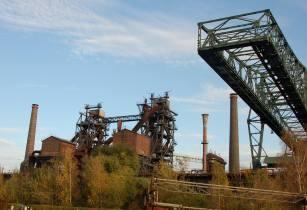The African Development Bank’s (AfDB) High 5 priority areas are set to support the continents achievement of the Sustainable Development Goals (SDGs), with a major focus on Industrialise Africa and Integrate Africa, as Africa must become better integrated in terms of trade and markets
At the same time, many African economies continue to function at well below their full potential. Structural transformation is needed to create more jobs, reduce poverty and accomplish sustainable development objectives.
In western Mauritania, the Brakna-Ouest irrigation infrastructure improvement project, supported by the Bank with US$12mn, enabled 1500 farming and livestock-producing families to return to cultivating their fields.
AfDB made investment in energy a priority for food security. Since 2016, it has mobilised US$12bn for its “Light Up Africa” strategic priority and accessed 13.4 million people with electricity.
Morocco has made significant progress in widening access to electricity. In past twenty years, the electricity system has expanded to cover almost the entire country. The national rural electrification program, supported by the Bank with US$173.62 mn, has connected nearly 12.8 million Moroccans to the national power grid.
In Dar El Aïn, a village twenty kilometres from Marrakesh, the arrival of electricity has opened new doors for the women of the “Al Amal” cooperative. They use electricity to process their wheat into couscous or create other barley or wheat-based products. “The cooperative processes local crops into added-value products. Now, with electricity, the women are much more efficient, and their products are of better quality. It creates hope,” says Fatima-Zahra, a thirty-year-old member.
As part of the Bank’s “Industrialise Africa” priority, 9 million people have gained access to private financing. For instance, in Nigeria where more than 70 percent of the population depends on agriculture, fluctuating harvests have significant repercussions on yields, income and food security.
Locally produced fertilizer is one solution. The Bank provided US$100mn to support construction of a modern fertilizer plant in Port Harcourt.
To derive more benefit from industrialisation, Africa must become better integrated in terms of trade and markets. By this, African countries can gain access to larger markets and thereby increase incomes for millions of residents through new opportunities.
The Nairobi-Addis-Ababa corridor, which received$670 million in Bank financing and which has enhanced the potential for trade and job growth in Ethiopia and Kenya.
Daniel Yatta, a forty-year-old Kenyan lorry driver, has been transporting goods between Nairobi and Addis-Ababa for 15 years, and has seen the new road’s impact on his business. “Back in the day, it would take more than two weeks to drive between Addis and Nairobi,” he says. The new road has made his life much easier. “With the new road, the trip takes only a few days. With 30 tonnes of freight, it only takes about 24 hours to drive to Addis!” he continues.
An important part of improving living conditions is providing better access to essential services such as health, water and sanitation. AfDB supported projects have given 43 million people access to water and sanitation since 2015.





















